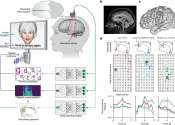Networks of silver nanowires seem to learn and remember, much like our brains
Over the past year or so, generative AI models such as ChatGPT and DALL-E have made it possible to produce vast quantities of apparently human-like, high-quality creative content from a simple series of prompts.
Apr 29, 2023
0
41









